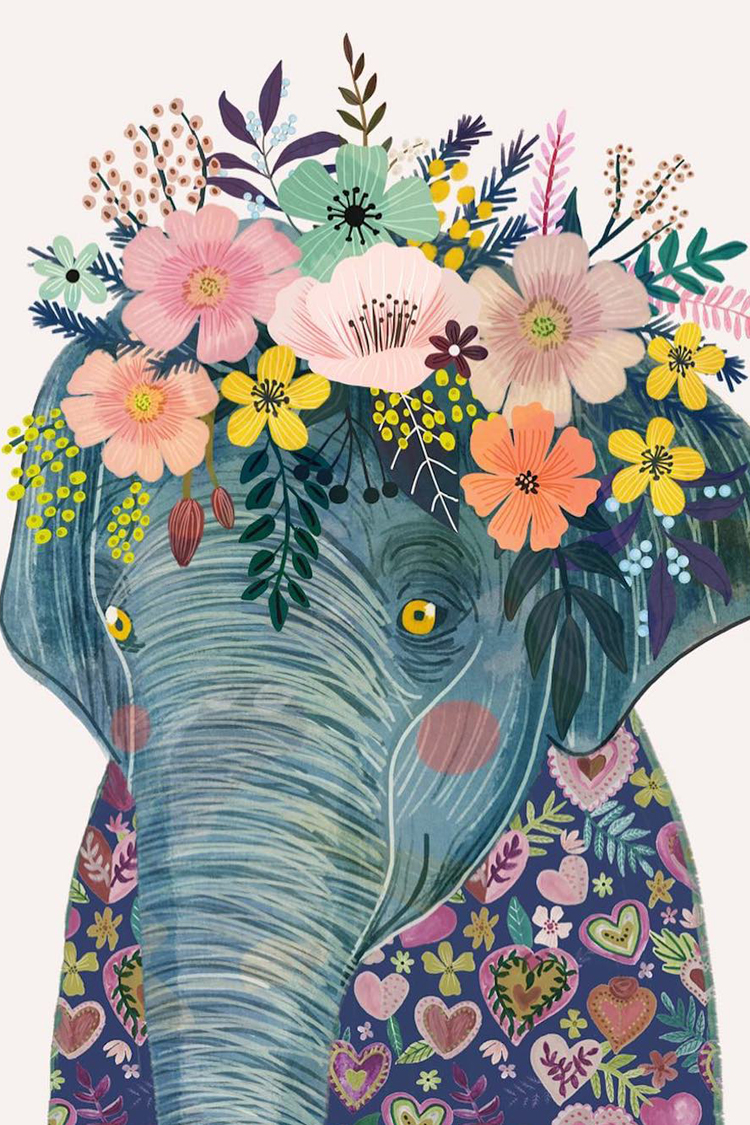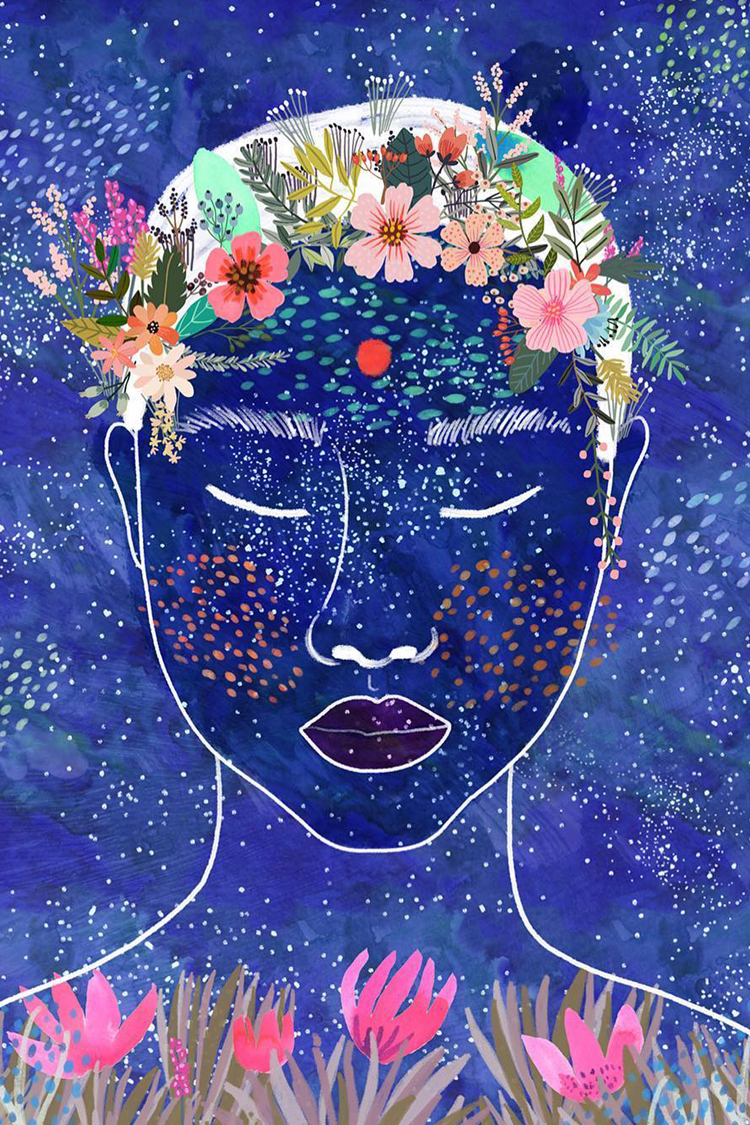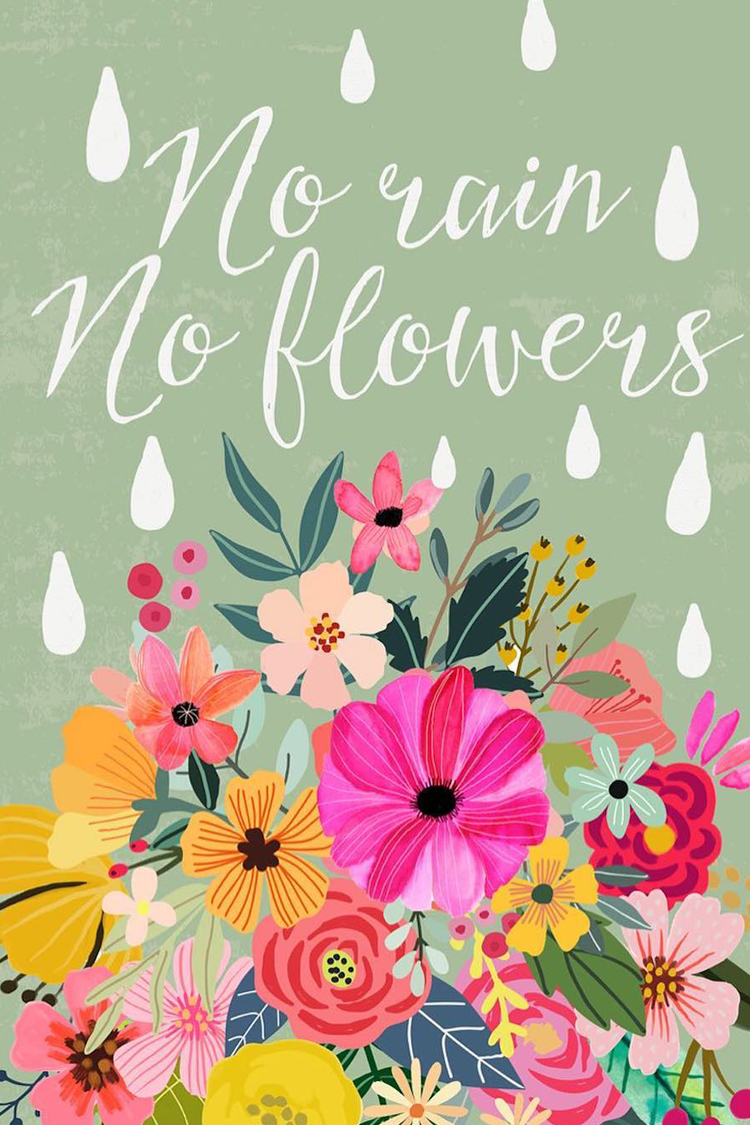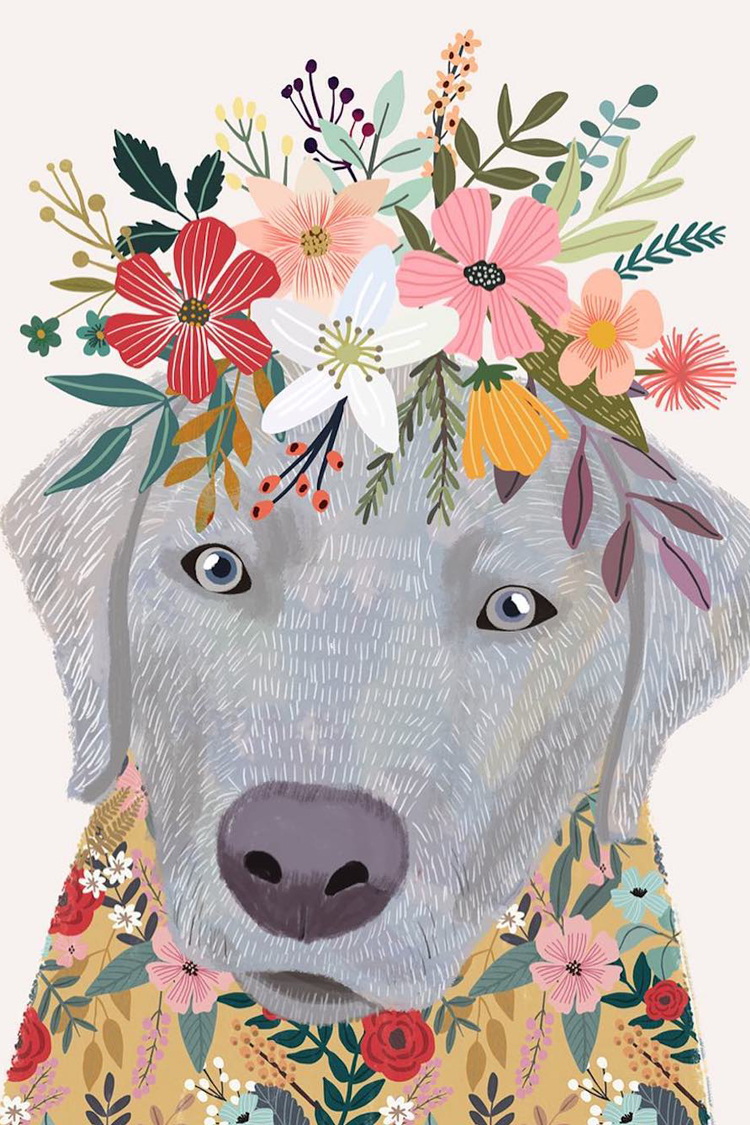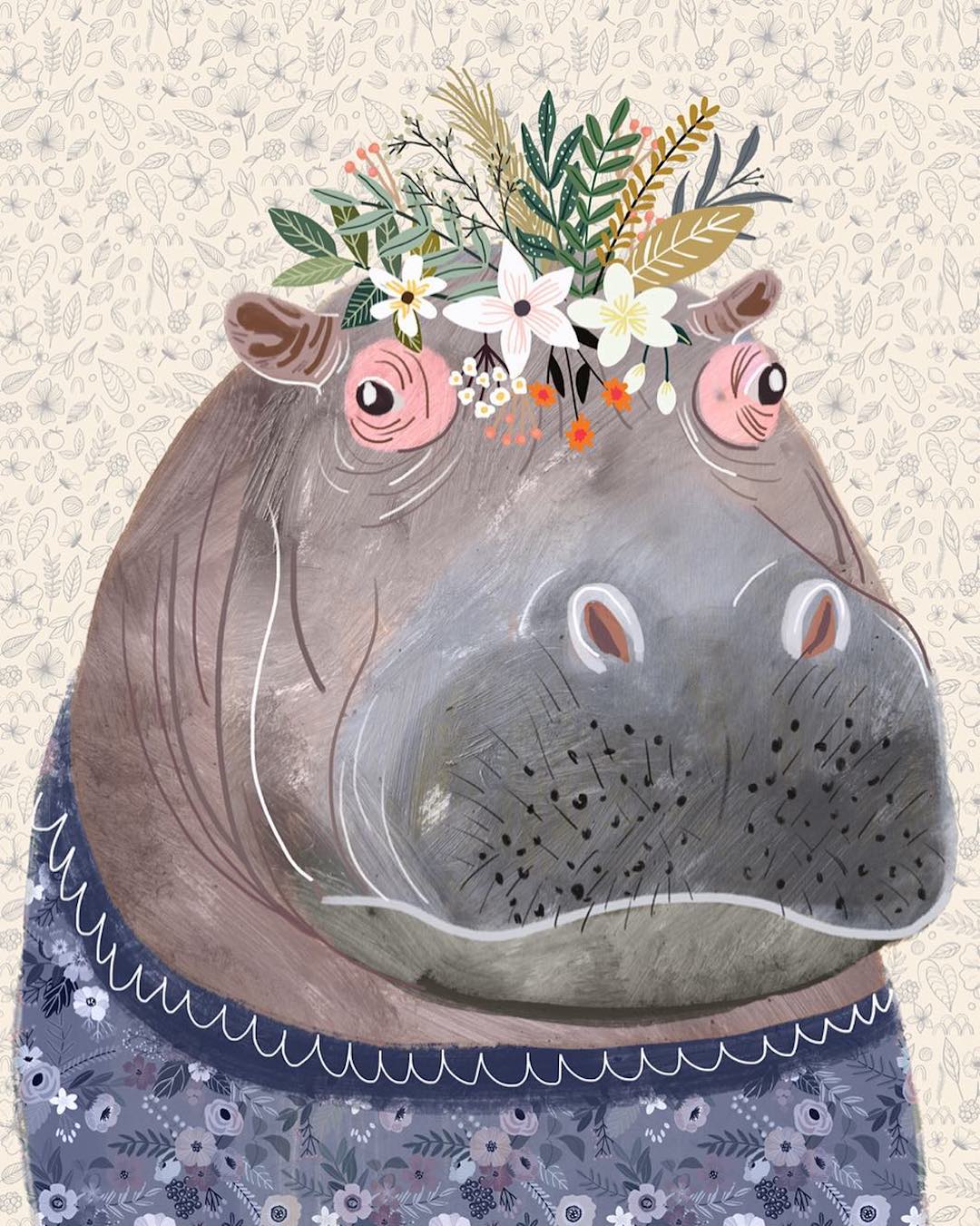
I find few things as delightful as animals wearing flower crowns. For years, illustrator Mia Charro has imagined what cats, dogs, sloths, and even hippos would look like adorned with colorful blossoms placed atop their heads. I’m not the only person who finds this series endearing—it’s gained a lot of positive attention for her work. (You can find it on Instagram and Society6!)
I spoke to Mia about the ongoing series and the path she took to becoming an illustrator. Spoiler alert: she wasn’t always an illustrator! Learn more about how she shaped her career and how the power of positive thinking is at the heart of much of her imagery.
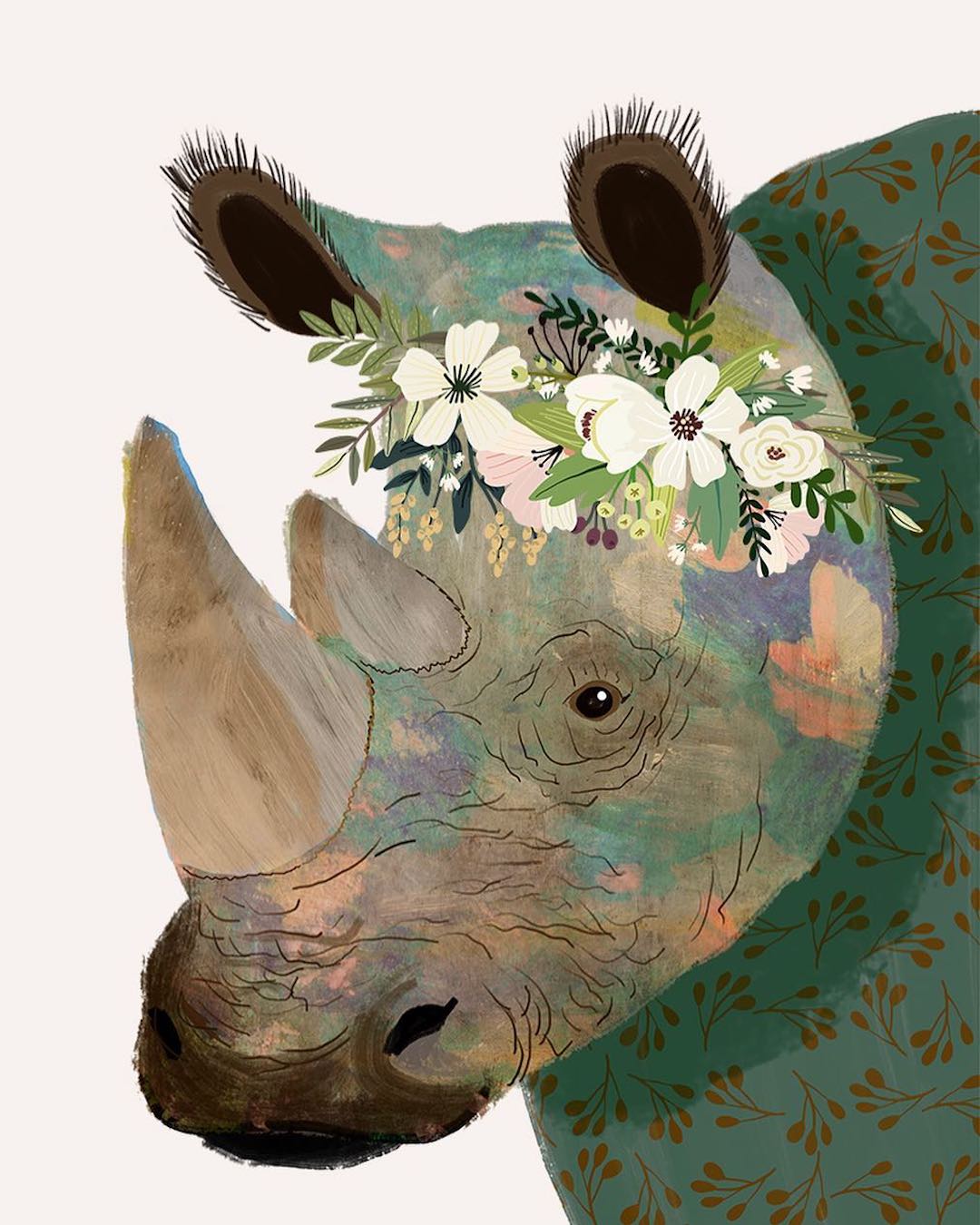
You’ve said before that you didn’t attend art school, and that you developed your skills as an illustrator and designer at your first job. Can you explain more about this journey?
Of course. Ever since I can remember I’ve always liked to draw. I illustrated my own stories and I filled up the school’s tables with doodles, plants, and robots drawn with a pencil. But I never thought about working with it. After college I decided to take a web design course and, among other programs, I learned how to use Photoshop. I discovered the wonderful world of Control + Z, which allowed you to solve mistakes, use layers and how they fused together… It was new territory that was unwrapping right in front of me. So, I spent lots of time at home experimenting, I even wrote a poetry book with digital collages.
What did you learn for yourself and how did you eventually transition into illustration?
Later on and thanks to this course, I started to work in a company that designed online courses. In order to make these courses, they gave us instructions that were the explanation of the text and the description of an image that had to go with it. We had to look for that image or a similar one in stock sites, which took a very long time, so I concluded that it was much quicker to make a drawing in Adobe Flash. My bosses liked the idea and that’s how I started to create a whole lot of vector illustrations.
Many times, we had some free time at work and I dedicated those hours to draw and learn how to use other programs like Adobe Illustrator; with patience and a lot of practice. The most valuable lesson I learned around that time was that, even though I was a little tired of making stock-like illustrations (people in meetings, shaking hands, walking down the city, talking, at a work table…), they allowed me to develop my technique a lot. So, “you never know when something bad turns into a blessing”.
When I had the idea to write stories, illustrating them came naturally. Writing and illustrating at the same time allows you to dive deeply into the creative process.
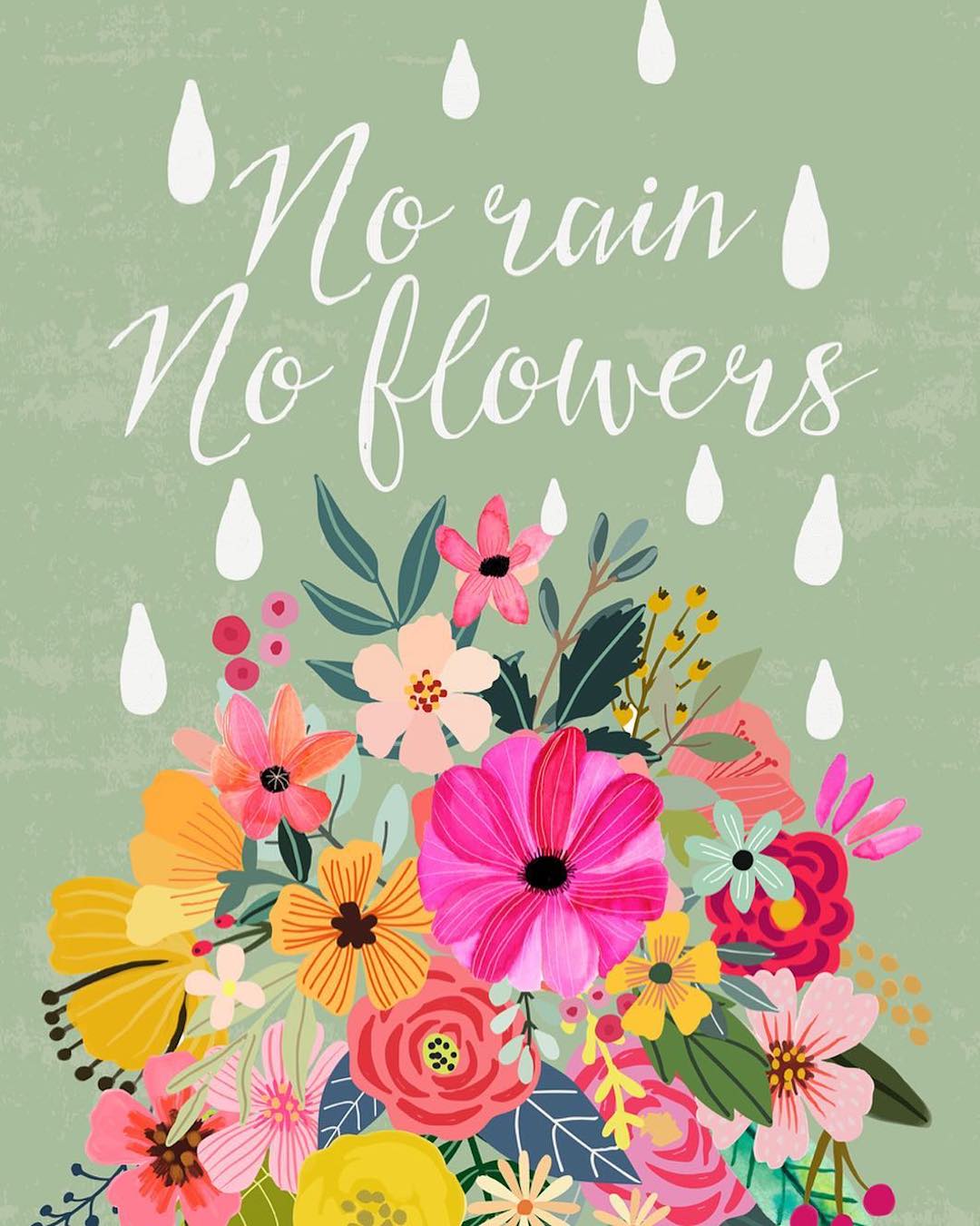
What is your process for creating your work digitally?
The idea comes first, like a flash, something you want to draw and communicate. I honestly do sketches on paper very rarely. I tend to work directly on the computer, and I fix shapes and change colors during the process. Truth is I save a lot on paper and materials 🙂
I’ve used Photoshop the most, with Kyle T. Webster’s brushes (absolutely advisable to use) but also Illustrator and Flash. Even though Adobe Flash has always been thought for making animations, I’ve always found it to be a great tool for making vector drawings, even better than Adobe Illustrator. It’s much more organic, simpler… very similar to what today is Adobe Illustrator Draw for tablets. At first, I did everything with the mouse, but then I bought a Wacom Intuos Pro tablet and I thought it was very worth it.
A year ago, I discovered the iPad Pro and it completely changed the rules of the game. Now I draw a lot in the iPad, with Procreate and Adobe Illustrator Draw, and then I do the final touches with Photoshop on the computer. The iPad gives you the freedom to take it everywhere, and wherever inspiration strikes, you’re ready to capture it.
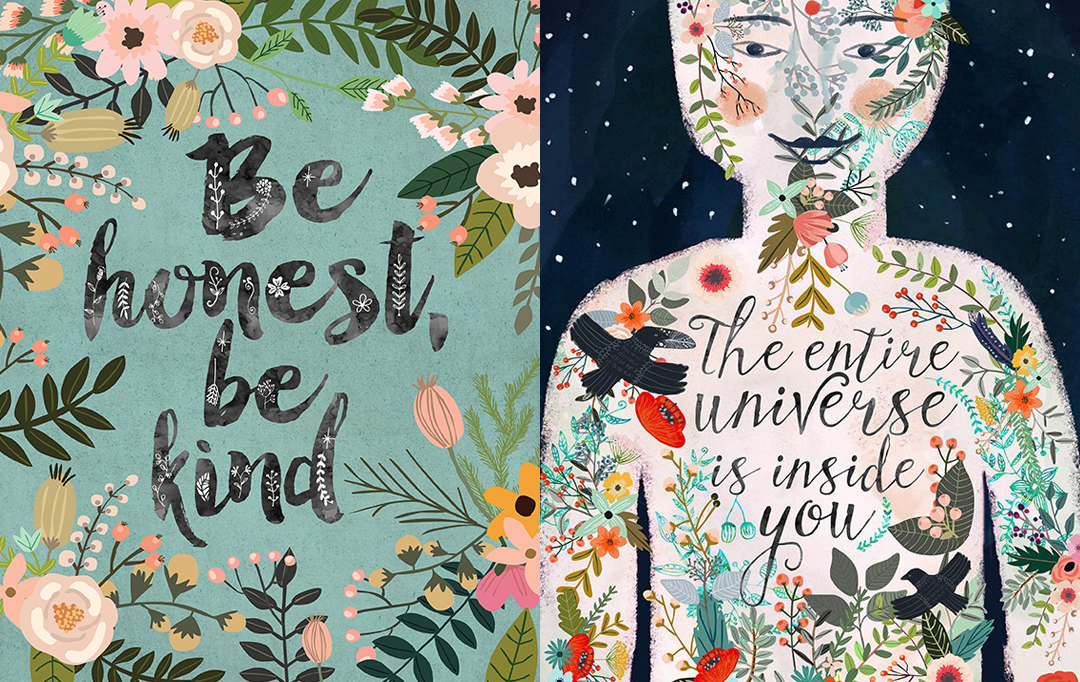
Your work has a positive spin to it, often with empowering quotes. What inspires you to create this type of work? How do you foster this positivity in your own life?
A few years ago I went through complicated times in my life and I started getting panic attacks that derived in agoraphobia. I’m telling this because there will be some people who read the interview who have gone through the same, that way they can know there’s light at the end of the tunnel.
Around that time, I worked a lot on “realizing” what had taken me there, what was making me feel constantly stressed. I immersed myself in yoga and meditation, and I noticed an underground stream of thoughts that softly sneaked under our consciousness. Those ideas like “it won’t go well”, “you’re not worthy enough”… I discovered the importance of these negative subconscious thoughts in our life of which we don’t realize. They’re beliefs that we have cultivated since we were little and which have grown in our perception of reality ever since. Yoga speaks of these thoughts and how to change them, it’s what we have adapted to our western culture as “positive thinking” or NLP. So, I decided to do my part to add a bit more positivity in our lives. I like to think that a frame with a positive quote that you read before leaving home or when you get back is like a little seed of light in your head.
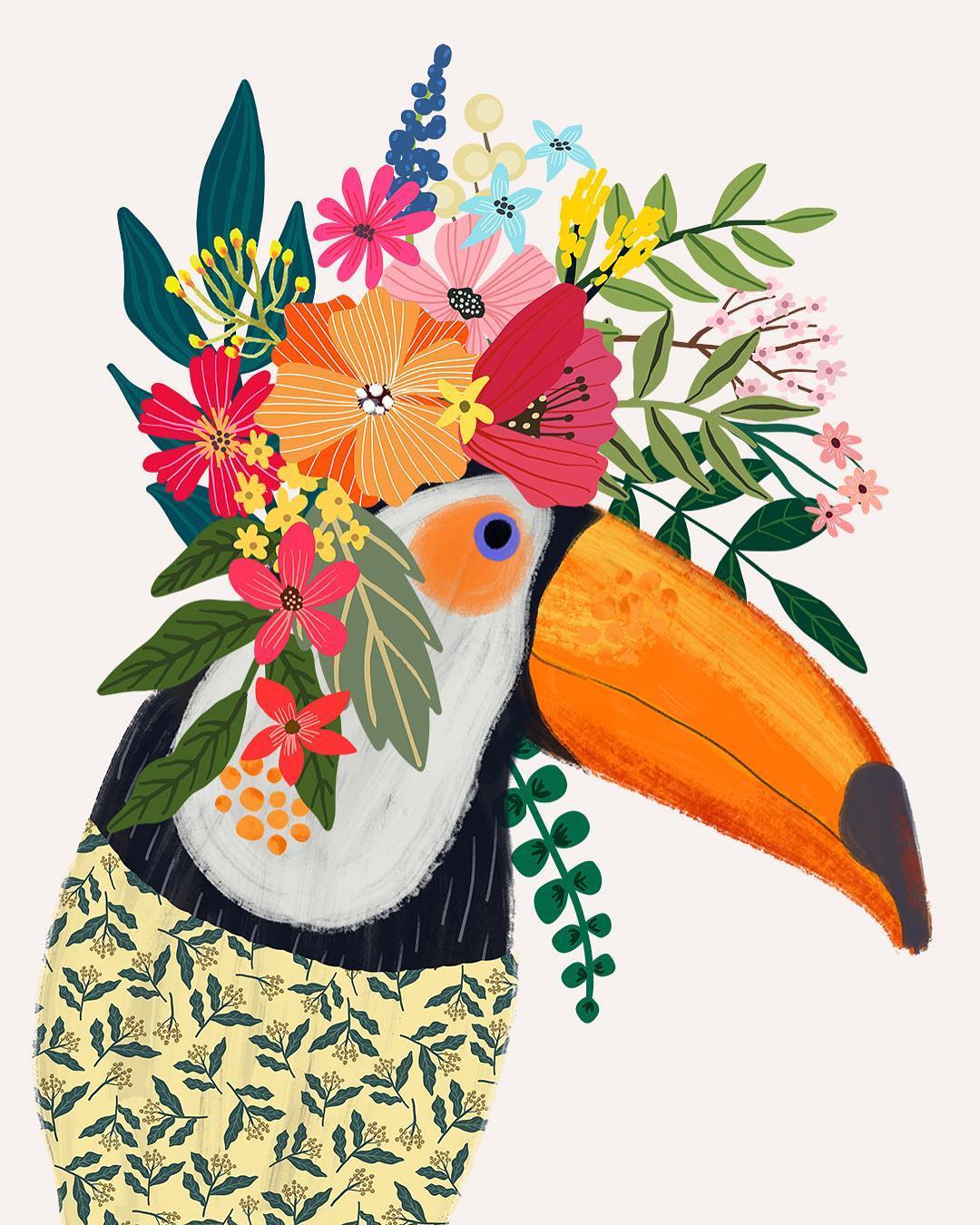
Your animals wearing floral crowns are so charming. How did you come up with the idea? How has it evolved since you first began?
The idea came to me with my first drawing of animals with flower crowns “Frida Cathlo”. Truth is, the image of Frida Cathlo, along with its name, came to me in a flash. I didn’t have to make any effort to get it. Sometimes inspiration is like that; it arrives, whispers to you and leaves. And I saw that flowers on the head perfectly represented what I wanted to transmit: “Your mind is a garden. Your thoughts are the seeds. You can grow flowers or you can grow weeds.”
So, I started drawing flowers on top of almost all of my characters’ and animals’ heads. Truth is that this concept, in particular, hasn’t changed much, and I like that for now. I love drawing animals with flowers on their heads. We’ll see if it turns into something else. maybe the inspiration comes back and touches my forehead.
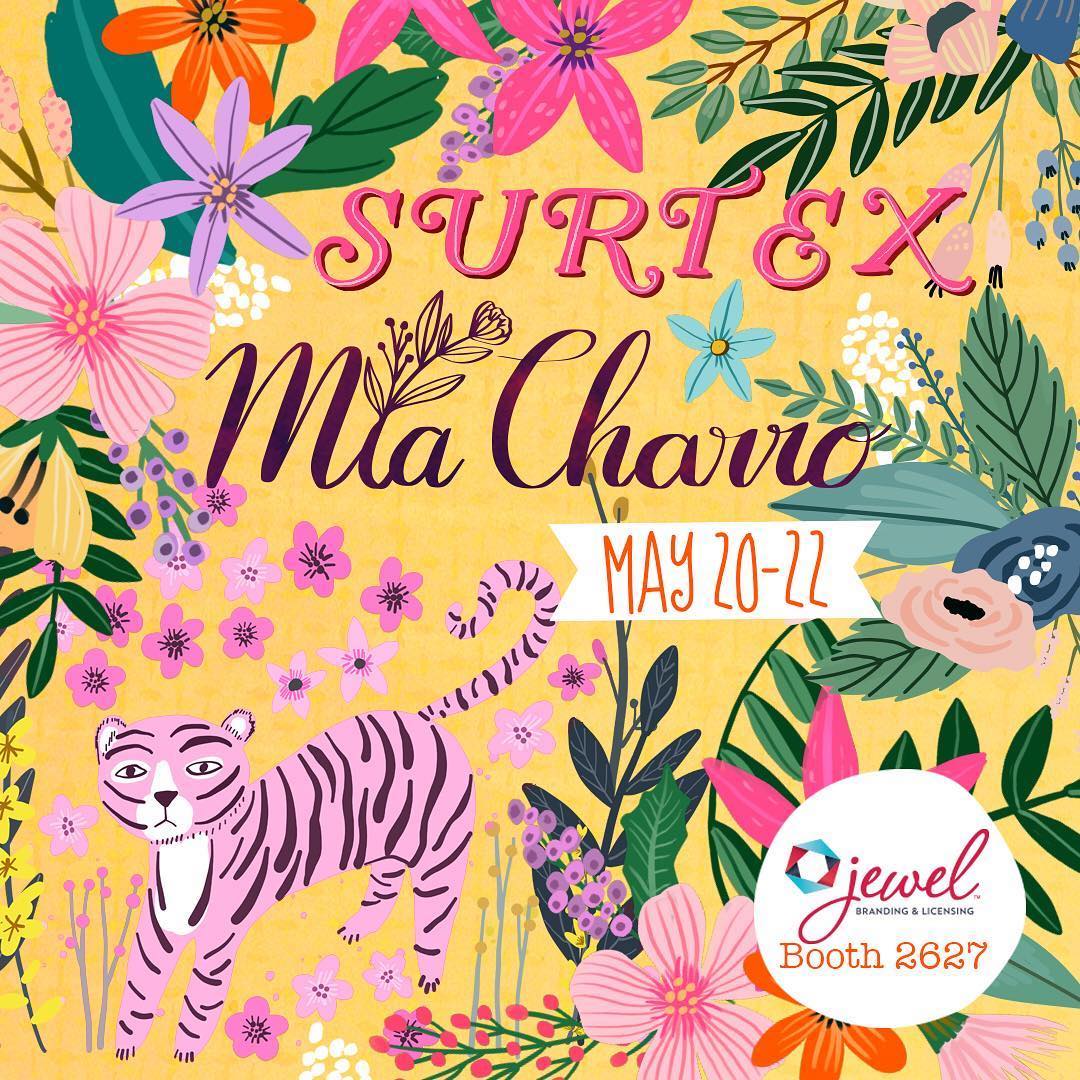
Where has your career taken you in the past couple of years? Is there anything about it that has surprised you?
I’ve grown a lot as an illustrator in the past couple of years. The agency that represents me—Jewel Branding—has gotten me very interesting clients, and I’m so grateful. I’ve worked with The Happy Planner, Anthropologie, Dr. Oz The Good Life, I’ve collaborated on a notebook with Amnesty International…
One of the things that I’m the most surprised about is the importance that Instagram has gotten in these two years. It’s an incredible tool to show your work and to share inquiries and ideas with artists. It has turned into something essential for my business.
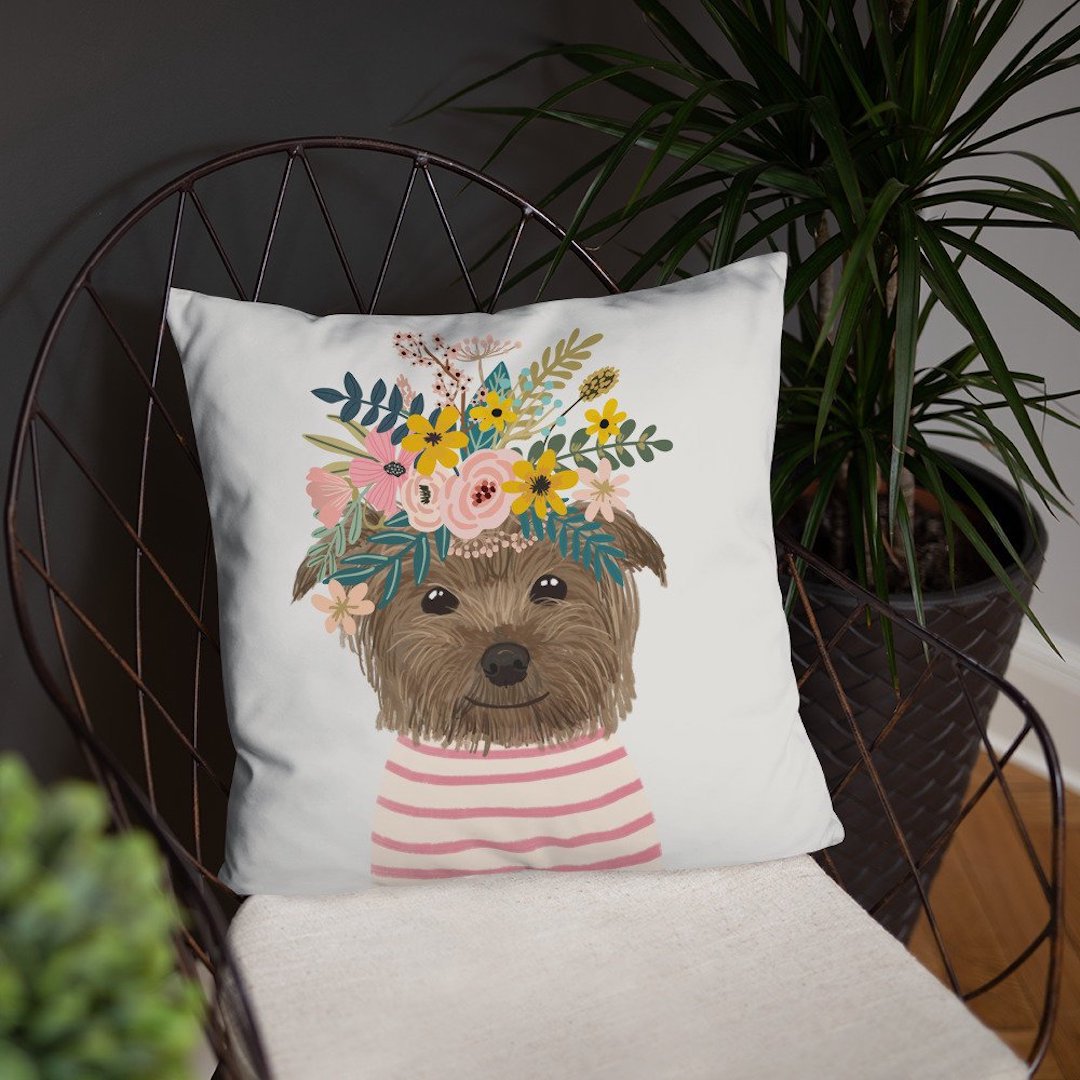
Many of your illustrations are on products. Does illustrating on an object change how you approach the imagery at all?
Well, truth is that I’m incredibly lucky that 80% of what I do is illustrate what inspires me and then there are companies that want to use those images for their cups, paintings, notebooks, cards, fabrics…
The problem is that I’m used to thinking in 2D illustrations on 8 x 11-inch sheets or flat paper. When you have to adapt your illustration in a 3D product, this is a more arduous work. You have to consider the material, the number of colors… You need to find a balance between the main idea and the final product, in a way where you don’t lose what you wanted to communicate at the beginning. For example, in my Society6 store, I have illustrations that lose strength if I adopt them for mugs.
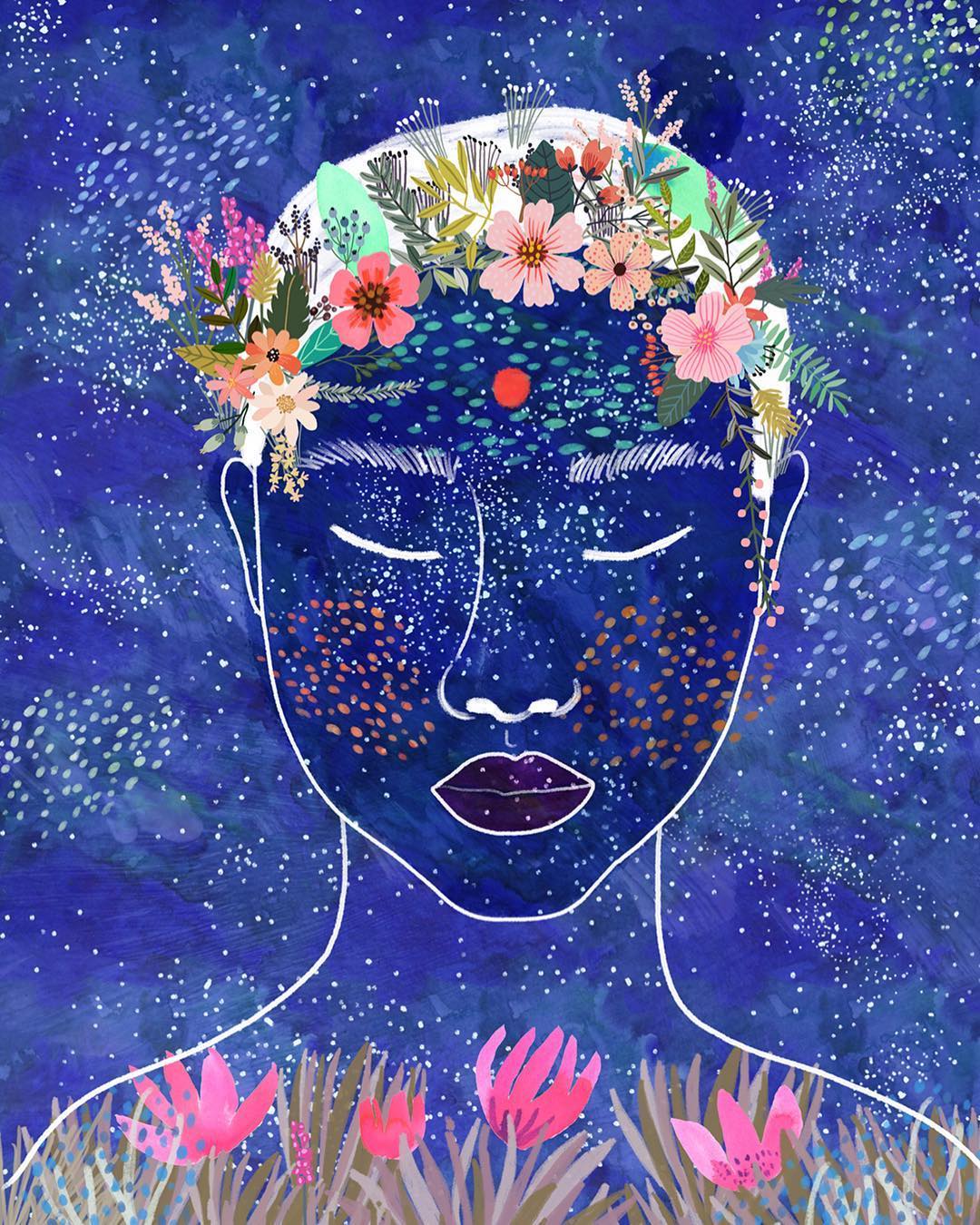
What piece of advice, habit, or tool has helped you the most in your career?
The quote that has helped me the most and which I want to share with you is “Where there’s a will there’s a way”. Willpower moves mountains, you just have to get it going. But remember that you also need breaks. If a motor is constantly working at 100%, it burns fast. And other of my foundations are yoga and meditation, which leads us towards self-discovery, to sailing through our immensities, to discover how valuable each one of us is.

